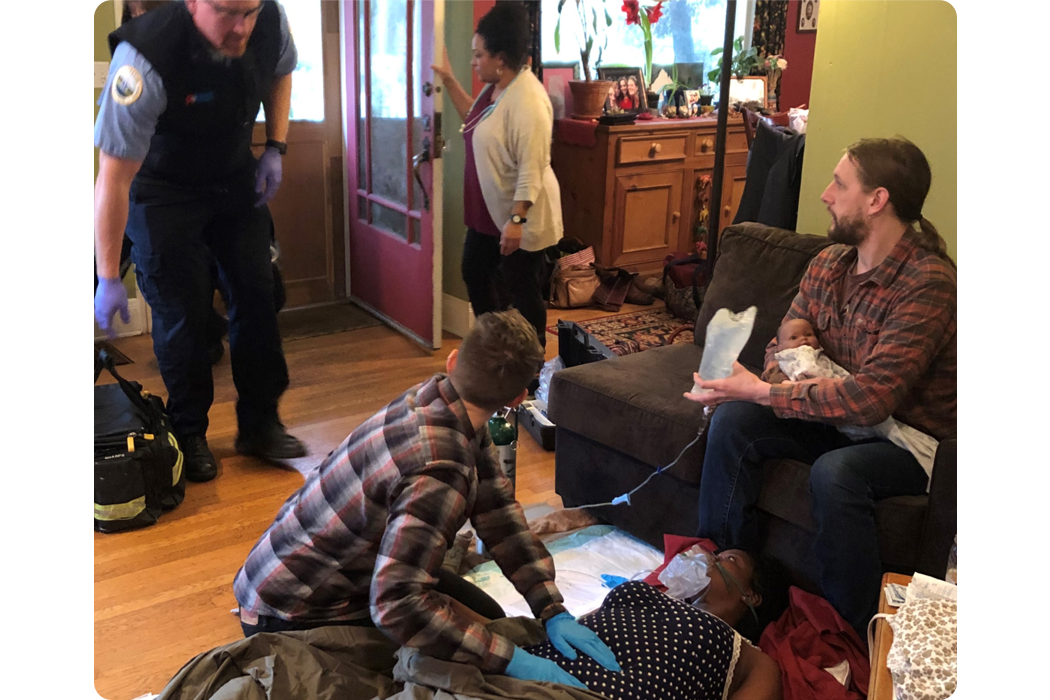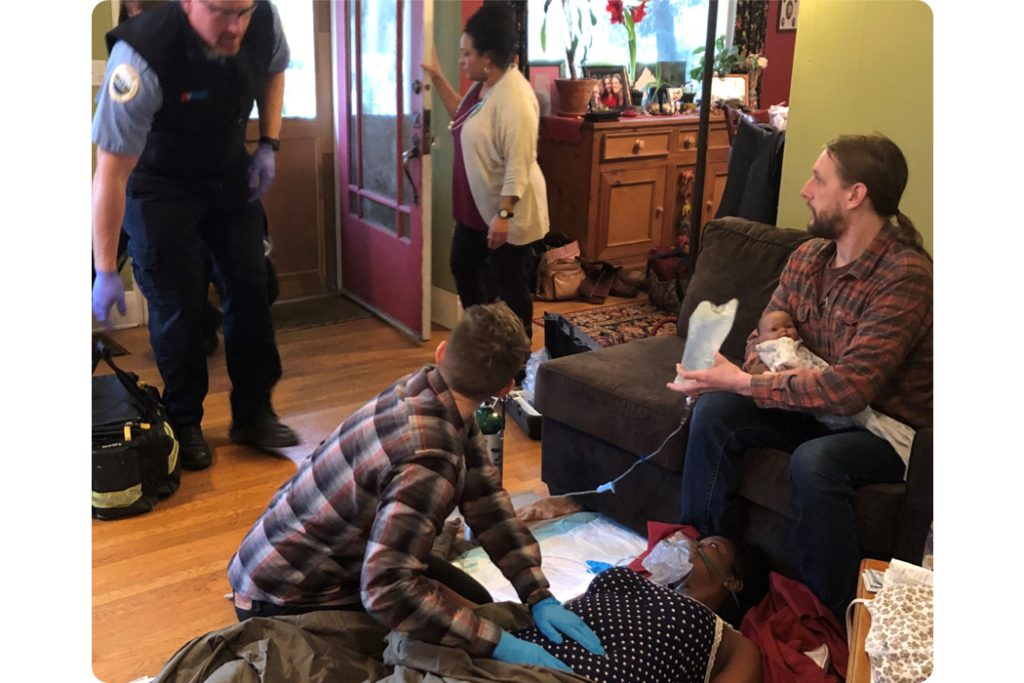Oregon Community Birth Transfer Partnership
Promoting safe transfers and smooth collaboration between home birth midwives, birth centers, and hospitals
Oregon Community Birth Transfer Partnership
Promoting safe transfers and smooth collaboration between home birth midwives, birth centers, and hospitals

Simulation of home birth to hospital transfer.

Simulation of home birth to hospital transfer.
Background
Planned home births and birth center births (also known as community births) are relatively common in Oregon compared to most of the United States. 5% of births in Oregon and 2% of births in the US overall are planned community births. Community births in the US have been increasing since 2004. Families choose community birth for a number of reasons and come from all walks of life, and all races, religions, and class backgrounds.
Planned community births unfold normally at home or birth center most of the time but part of what makes community birth safe is the ability to transfer to a hospital when it does not. Hospital transfer occurs in 15% of planned community births in Oregon, most often occurring when pain management and augmentation is required or as complications arise.
When transfer is needed, Midwives, emergency responders, and receiving hospital providers function as a care team. When we work together, outcomes and experiences are improved for birthing individuals and babies. Working as a team requires clear communication, understanding of each different roles, and coordination of care.
Transfer Improvement Toolkit
Transfer Improvement Toolkit
In 2020, building on foundational work by the Oregon Midwifery Council, a statewide, multidisciplinary committee was convened to review the culture and process for community to hospital transfers across the state. This work included seeking feedback from people who have experienced transfers and offers insight into areas in need of improvement. Best practices to improve community birth to hospital transfers are summarized in the CBTP toolkit.
The OPC and Oregon Midwifery Council continue supporting hospital teams, midwives, and birthing families to improve community birth transfers through regular transfer improvement meetings at 9 Oregon hospitals. Hospitals interested in joining the Community Birth Transfer Partnership should contact silke@oregonperinatalcollaborative.org
Content Last Updated: August 30, 2024
